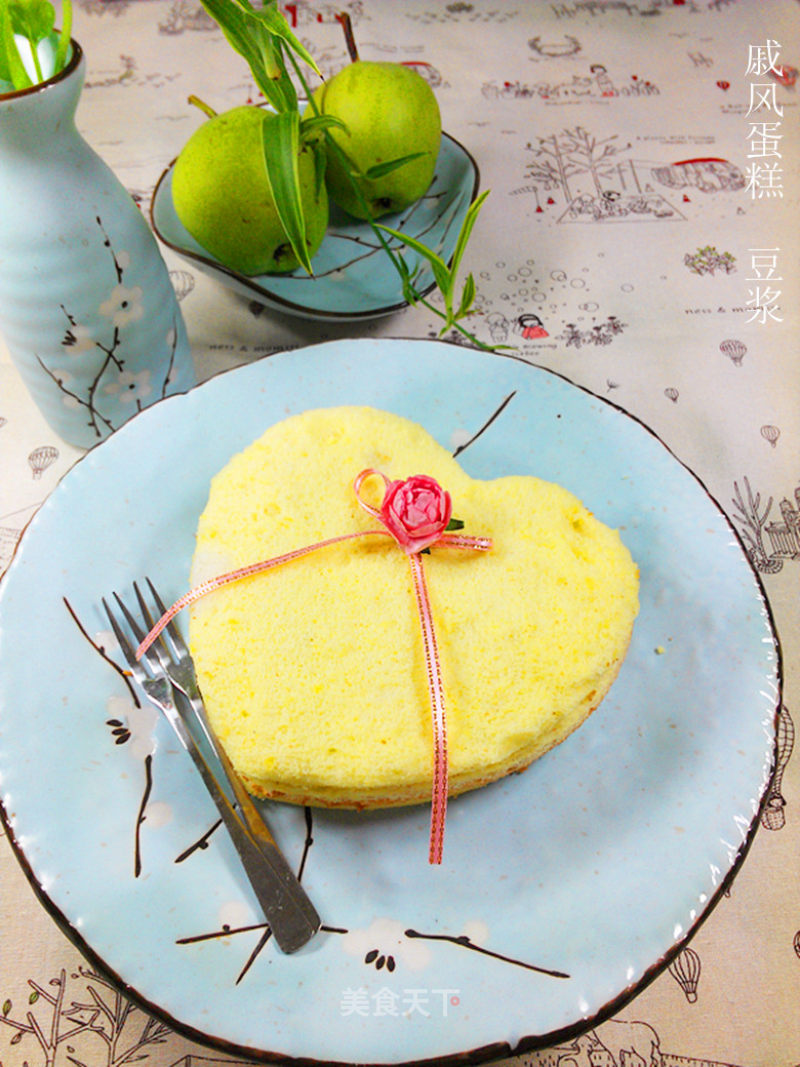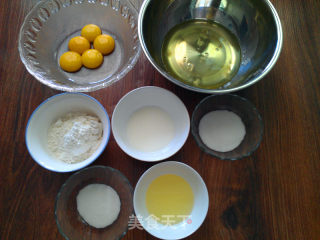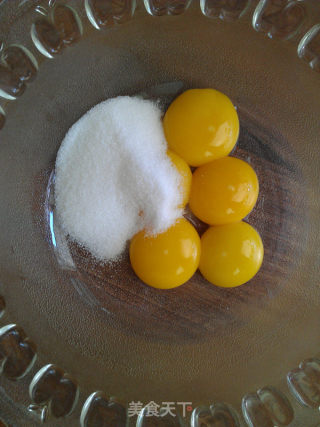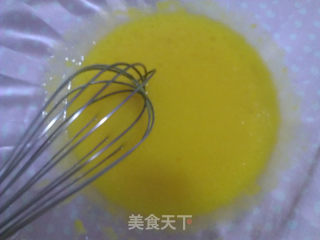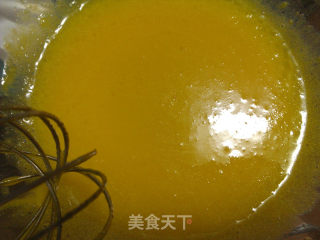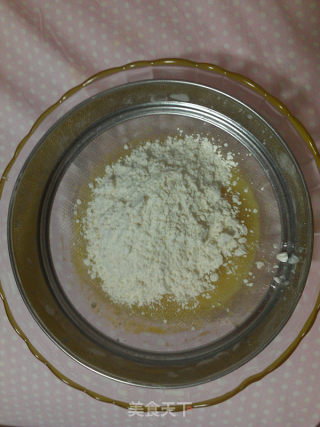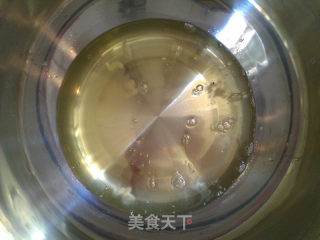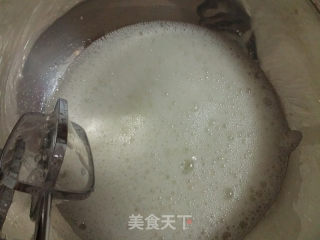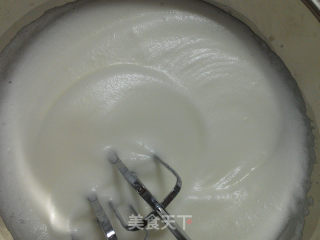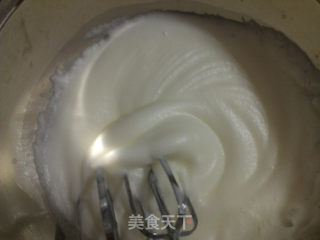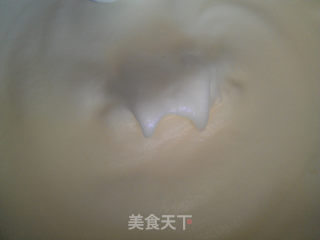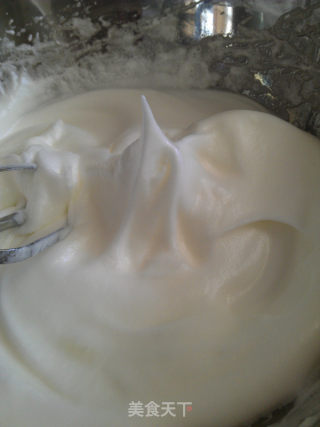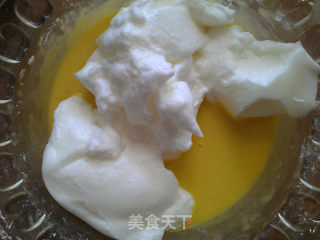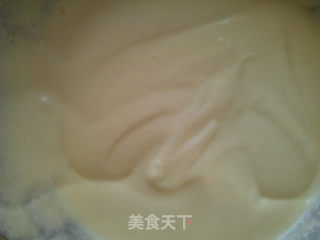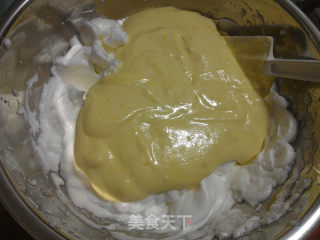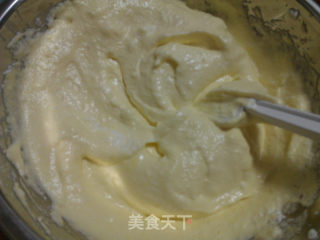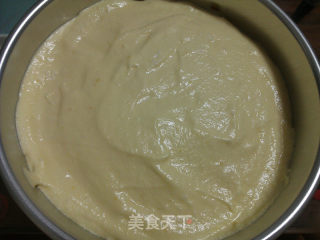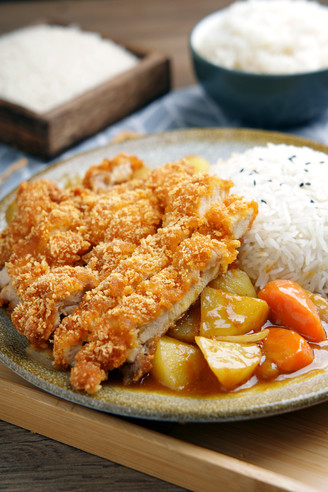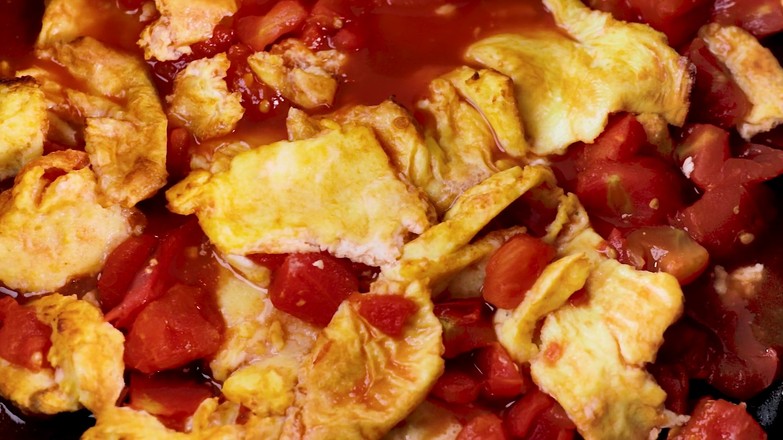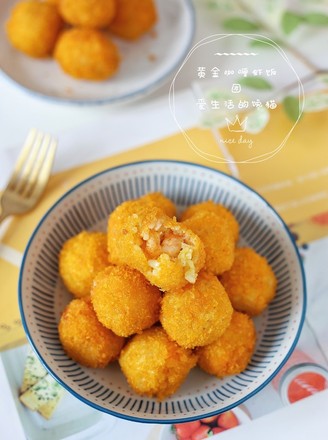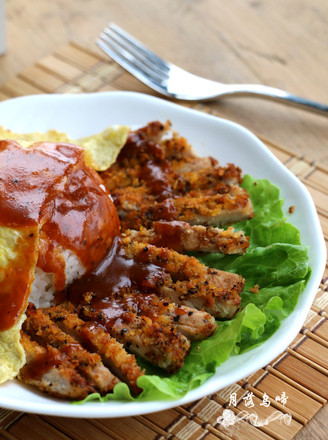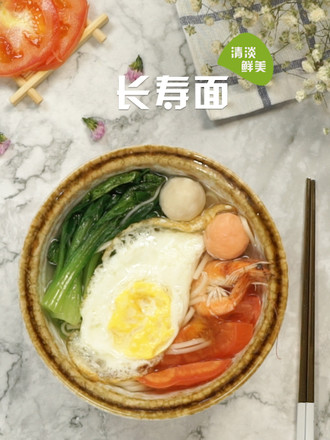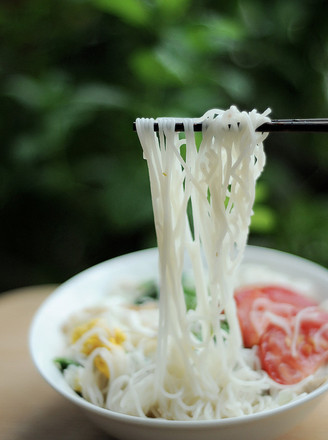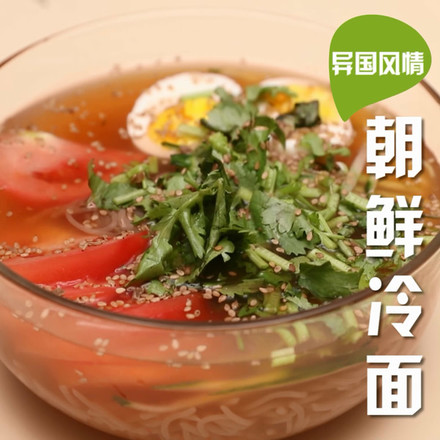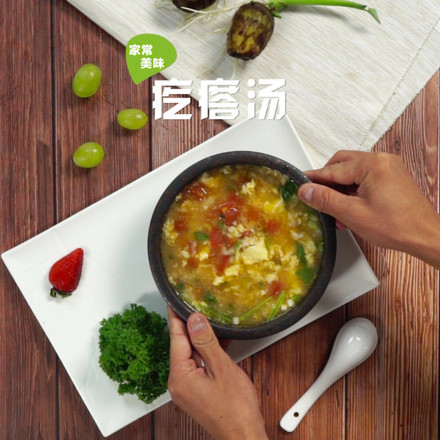Chiffon Cake with A Silky Texture
1.
1: Weigh all the raw materials.
2.
2: Separate egg yolk and protein and put them into oil-free and water-free containers. Add 30 grams of caster sugar to the egg yolk.
3.
3. Stir evenly with a manual whisk to make it into a relatively fluffy state
4.
4: Add corn oil and stir until fully blended. The state at this time will be thicker than when corn oil is not added. Then slowly add the milk, stirring while adding. Stir until completely homogeneous. Stir in the same direction.
5.
5: Sift in the low powder that has been sieved once in advance.
6.
6: Stir up and down in irregular directions evenly to form a particle-free egg yolk paste, set aside.
7.
7: Squeeze 5 or 6 drops of lemon juice into the egg whites.
8.
8. Use an electric whisk at low speed to stir until large bubbles are formed.
9.
9. Add 20 grams of caster sugar. (At this time, I am driving in 2 gears, and the whisk is rotated in the same direction in the basin to beat. This step is about 15 seconds)
10.
10: Add the whisk to level 3 and continue to stir. When the egg whites are in a thick silk state, add 20 grams of sugar for the second time. (This step is 2 to 3 minutes)
11.
11: Add the whisk to gear 4 and continue mixing until wet foaming (turn off the whisk and lift it up, softer sharp corners will appear on the egg white surface and the whisk), add 20 grams for the third time Sugar. (This step is about 2 minutes)
12.
12: Turn the whisk to gear 5 and continue to stir to form a dry foam. At this time, turn off the whisk and lift it up. Obviously straight sharp corners appear on the surface of the egg white and the whisk. At this time, the egg white will not fall or move when the pot is inverted. (This step is about 2 minutes)
13.
13: Take 1/3 of the egg white and add it to the egg yolk paste.
14.
14: Use a rubber spatula to mix up and down evenly in irregular directions. (It is tossed up and down, just like stir-frying, instead of stirring in circles)
15.
15: Pour the mixed egg yolk paste back into the remaining 2/3 of the egg white.
16.
16: Continue to follow the irregular direction and stir evenly by turning up and down. The mixed cake batter should be particle-free, fluffy, light and delicate.
17.
17: Mix the cake batter, pour it into a clean, oil-free and water-free cake mold, lift the cake mold and shake it a few times to remove the large bubbles in the cake batter. Then put it in the preheated oven. 170 degrees, middle and lower level, 50 minutes.
18.
18: Slightly cracked and collapsed, as long as it is not serious, it will not affect the taste and use for cakes.

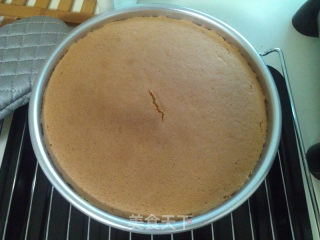
Tips:
1. Regarding whether the eggs need to be refrigerated. Ask the professionals, the egg whites should be the easiest to beat around 20 degrees, so many recipes mention that the eggs should be taken out of the refrigerator to warm up in advance when the egg whites are being beaten. This is the reason. However, because egg whites are much easier to beat than whole eggs, the egg whites will be easily beaten even in the refrigerated state. Moreover, the low temperature helps maintain the stability of the foam and does not defoam too quickly. So, in fact, it's okay not to come back to play.
2. Many students reported that the chiffon has a fishy smell after roasting. Even if high-quality eggs are used and vanilla powder is added, it still has a fishy smell, which is not as delicious as the ones bought outside. My opinion is: It is very possible that Chiffon is not fully cooked. I have used many kinds of eggs, expensive and cheap, and the effect is not too big, and the taste is very good, no spices are added, and there is no eggy smell. It is conceivable that the cakes sold in the bakery outside will not use too expensive eggs and too high-grade spices.
3. There are two methods to detect whether the chiffon is cooked. One is to press it to see if there is a rustle, and the other is to insert a toothpick to see if there is any residue on the toothpick. The first method is not personally recognized. Although the second method is useful, sometimes it is not very safe. Sometimes the toothpicks are clean, and the inside of the cake may be a little moist and not fully cooked. It is best to make a comprehensive judgment based on your own production experience. For example, my oven is baked at 170 degrees for about an hour (Changdi CVR900), what about your oven? Let it tell you! (Of course, it is best to control the baking time within a reasonable range. If the baking time is too long, the moisture in the cake will evaporate too much, and the taste will be dry)
4. A successful Chiffon is not only a complete shape without shrinkage, but the slight cracking or slight shrinkage of the chiffon is not a serious problem. The soft and delicate taste is more important than the complete shape.
5. Chiffon has many formulas, and different formulas have their own taste and characteristics. As long as the ingredients are controlled within a reasonable range, a successful chiffon can be made. But for novices, it is best to make Chiffon according to a fixed formula. When you have enough experience and professional knowledge, you can try to adjust the formula of Chiffon. For Chiffon’s recipe, don’t take it for granted—for example, don’t think that adding an extra egg to the recipe will make the cake softer, which will make the cake taste harder.
6. Which layer is placed on when baking? Household ovens are generally small, and it is recommended to place them in the middle and lower layers to prevent the top of the cake from being burned too close to the heating tube after it has expanded.
7. Note that anti-sticking cake molds cannot be used when Chiffon is baking, and oil around the mold cannot be used, because Chiffon needs to rely on the adhesion of the mold wall to grow tall, otherwise the Chiffon will not grow high (of course, in the cake mold) Spreading greased paper around is also prohibited).
8. About egg yolk

